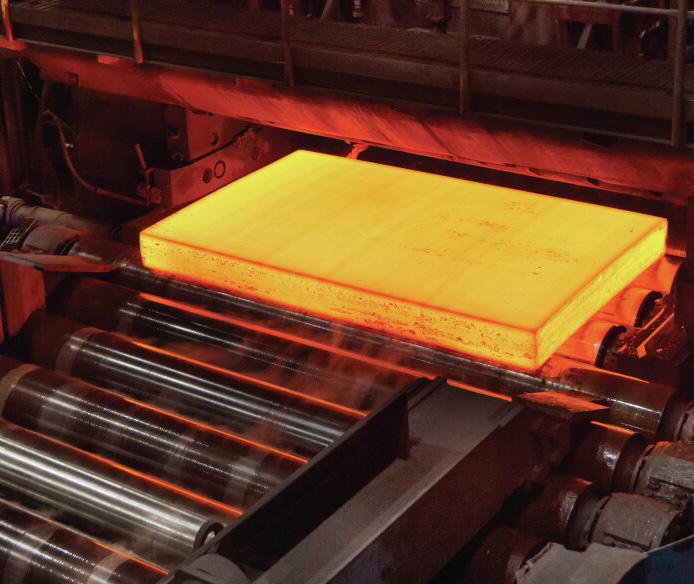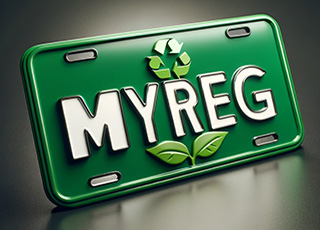The production of number plates, while essential for vehicle identification, often goes unnoticed in discussions about environmental sustainability. However, the materials and processes involved in manufacturing these seemingly mundane items can have significant ecological implications. In this article, we’ll delve into the environmental impact of number plate production, exploring the materials and processes commonly used and examining eco-friendly alternatives.
Materials Used in Number Plate Production
 Traditional number plates are commonly crafted from plastic, but were once predominantly aluminium or steel, prized for their resilience against outdoor elements. While these materials offer durability, their production poses environmental challenges. Extracting and processing metals like aluminium and steel demand significant energy consumption and often result in environmental degradation. Moreover, the application of toxic coatings and paints during the production process compounds these concerns, introducing harmful chemicals into the environment.
Traditional number plates are commonly crafted from plastic, but were once predominantly aluminium or steel, prized for their resilience against outdoor elements. While these materials offer durability, their production poses environmental challenges. Extracting and processing metals like aluminium and steel demand significant energy consumption and often result in environmental degradation. Moreover, the application of toxic coatings and paints during the production process compounds these concerns, introducing harmful chemicals into the environment.
Despite their durability, metal number plates carry a hefty ecological footprint. The extraction of raw materials involves extensive mining operations, which disrupt natural habitats and deplete finite resources. Furthermore, the processing of metals releases greenhouse gases and pollutants into the atmosphere, contributing to air and water pollution. Additionally, the disposal of old or damaged metal plates perpetuates the cycle of waste accumulation, as these materials often end up in landfills, where they pose long-term environmental risks.
However, the growing awareness of environmental sustainability has spurred interest in eco-friendly alternatives to traditional metal number plates. From recycled materials to innovative digital solutions, there’s a burgeoning array of options aimed at reducing the ecological impact of number plate production. By embracing these alternatives, we can not only reduce our environmental footprint but also pave the way for a more sustainable future in vehicle identification.
Processes Involved in Number Plate Production
The creation of number plates, whether traditional or modern, involves a series of intricate steps that contribute to their final form. For traditional metal plates, the process typically begins with metal fabrication, where sheets of aluminium or steel are cut and shaped into the desired size and format. This initial stage requires significant energy and resources, as raw materials are processed and refined to meet precise specifications.
Following fabrication, the plates undergo coating application, where layers of paint or protective coatings are added to enhance durability and weather resistance. While these coatings serve a practical purpose, they often contain toxic chemicals that can pose environmental risks during production and disposal.
Once coated, the plates are then embossed or printed with alphanumeric characters, completing the identification process. This step involves precision machinery and specialised techniques to ensure accurate reproduction of numbers and letters.
Despite their durability, traditional metal plates contribute to environmental degradation throughout their lifecycle. The extraction and processing of raw materials generate carbon emissions and waste, while the disposal of old or damaged plates adds to landfill accumulation and pollution.
In contrast, modern number plates made from plastic offer a more eco-friendly alternative. These plates are crafted using recycled or biodegradable materials, reducing reliance on finite resources and minimising environmental impact. Additionally, plastic plates can be produced using energy-efficient processes, further mitigating their carbon footprint.
However, it’s important to consider the end-of-life implications of plastic plates as well. While they may decompose more readily than metal plates, proper disposal and recycling practices are essential to prevent pollution and reduce environmental harm.
Overall, understanding the processes involved in number plate production sheds light on the environmental challenges and opportunities associated with this essential aspect of vehicle identification. By embracing eco-friendly alternatives and implementing sustainable practices, we can work towards minimising our ecological footprint and preserving the planet for future generations.
Environmental Consequences
 The impact of number plate production on the environment goes beyond the initial manufacturing stages. The continuous use, maintenance, and eventual disposal of metal plates contribute to various environmental challenges. Regular upkeep and replacement of metal plates not only deplete resources but also generate waste. As metal plates corrode over time, they release pollutants into the environment, exacerbating ecological harm.
The impact of number plate production on the environment goes beyond the initial manufacturing stages. The continuous use, maintenance, and eventual disposal of metal plates contribute to various environmental challenges. Regular upkeep and replacement of metal plates not only deplete resources but also generate waste. As metal plates corrode over time, they release pollutants into the environment, exacerbating ecological harm.
In the UK, the use of plastic number plates offers a more environmentally friendly alternative. Unlike metal plates, plastic plates are crafted from recycled or biodegradable materials, reducing the demand for new resources and minimising waste. Additionally, plastic plates can withstand corrosion better than their metal counterparts, prolonging their lifespan and reducing the need for frequent replacements.
However, it’s essential to consider the environmental impact of plastic plates as well. While they may offer certain advantages over metal plates, proper disposal and recycling practices are crucial to prevent pollution and minimise environmental harm. By understanding the environmental consequences of number plate production and adopting sustainable alternatives, we can work towards mitigating our ecological footprint and preserving the planet for future generations.
Exploring Eco-Friendly Alternatives
Recent years have witnessed a surge in interest regarding eco-friendly alternatives to conventional number plates. Among these alternatives, the use of recycled materials stands out as a promising solution. Recycled aluminium and plastic offer viable options, effectively reducing the environmental impact of production. By repurposing materials that would otherwise go to waste, these alternatives help conserve natural resources and minimise carbon emissions.
Moreover, advancements in technology have ushered in a new era of innovation with the introduction of digital number plates. Unlike traditional plates, digital plates eliminate the need for physical materials altogether, operating as virtual displays instead. This not only reduces resource consumption but also opens up avenues for customisation and versatility. Digital plates can be easily updated with new information or designs, offering unparalleled flexibility while reducing environmental impact.
In the UK, the adoption of plastic number plates represents a significant step towards sustainability. Crafted from recycled or biodegradable materials, plastic plates offer a durable and eco-friendly alternative to traditional metal plates. By embracing these eco-friendly alternatives, we can pave the way for a greener future while preserving the essential function of vehicle identification.
Finally
While number plates may seem like small and inconsequential items, their production can have significant environmental consequences. By examining the materials and processes involved and exploring eco-friendly alternatives, we can work towards reducing the environmental impact of number plate production. From using recycled materials to embracing digital solutions, there are various avenues for reducing the ecological footprint of this essential aspect of vehicle identification. As we strive towards a more sustainable future, it’s crucial to consider the environmental implications of everyday objects like number plates and seek innovative solutions to mitigate their impact on our planet.



Recent Comments